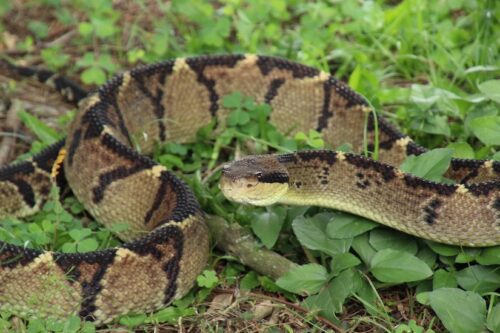Five of the deadliest snakes in Costa Rica
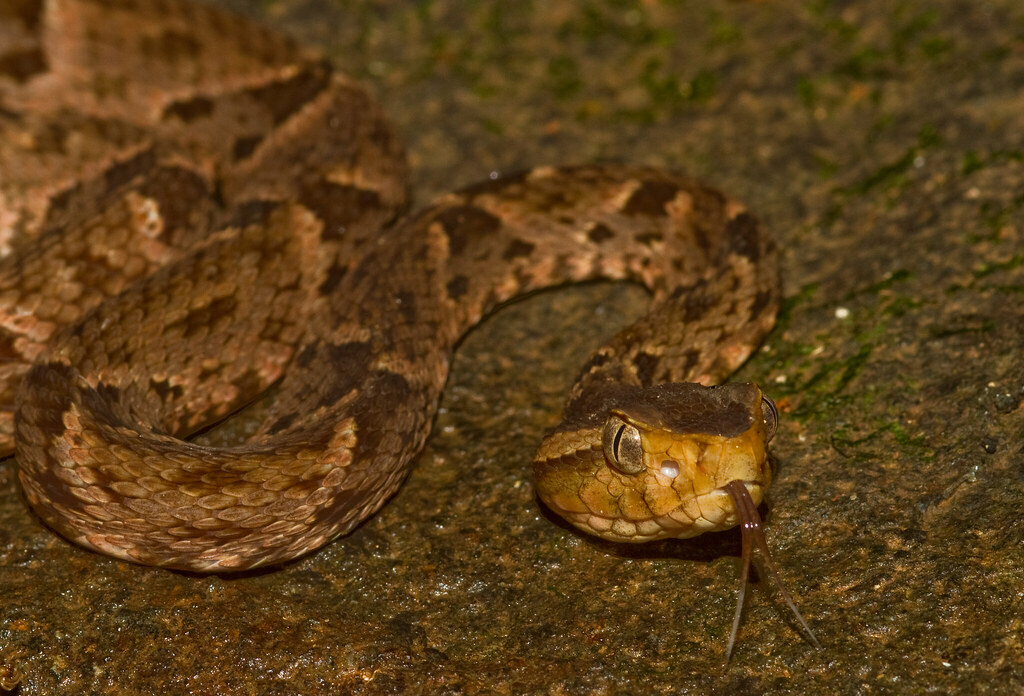
In Costa Rica everyday life snakes are viewed through different sets of lenses: from phobias, fear, and disgust in most people to those who obsess for their protection. “The best snake is a dead snake”, “creatures of the devil,” and “traitor like a snake”, are. Still, a few derogatory phrases reflect the sentiment of a large portion of the rural and urban populations, and these are the result of the widespread ignorance regarding the lives of these extraordinary reptiles, which lack feet and extremities.
It is precisely because of the existence of these venous species that it is necessary to study, in-depth, the aspects related to the biology of snakes, the effects of their toxins, and the snakebite accident as a public health problem. Currently, between 500 and 600 people suffer from snakebites, whose products require treatment in hospitals and clinics in the country. Understanding the mechanism of action of the toxins that make up the venom and preparing effective serums for its treatment is essential to solving this health problem.
Within a group as diverse as reptiles, in Costa Rica, snakes represent around two-thirds of these animals. Eleven families of snakes have been identified, of which only two are considered «potentially lethal» to humans. Thus, of the 140 species present in the Costa Rican territory, only 23 are considered poisonous.
Snake Venom
Paradoxically, the primary function of the venom or toxic secretions present in some species of snakes is to cause death or the rapid immobilization of prey to facilitate its capture and aid digestion.
If the venom is injected into humans, however, it may lead to a series of traumatic events, which, depending on the quantity of venom injected, the site of the bite, the size and physical stature of the person, and the particular species of snake, without help or special treatment the venom may cause anywhere from temporary or mild reactions to physical or permanent damage, or even death.
The venom is a clear or yellowish substance composed of a complex mixture of proteins, enzymes, and other chemical elements, and it varies in accordance to the species and taxonomic group.
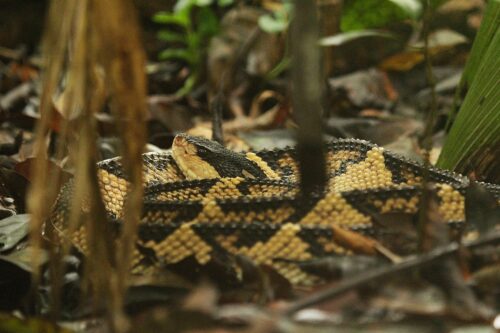
Black-headed Bushmaster – Lachesis melanocephala
An endemic species of the south pacific side of Costa Rica and western Panama, a rare viperid that occurs in primary forest where it’s tough to see. Although this species is considered one of the deadliest species of vipers, its bite is rare. This species is terrestrial, crepuscular, and nocturnal. Although its biology is mainly unknown, like Lachesis stenophrys on the Caribbean versant, it usually occupies subterranean cavities and mammal burrows as temporary retreats.
The accelerated destruction of the primary forest in its limited distribution environment has significantly decreased its population. This species has disappeared from different areas where it was considered typical; however, there are some fragmented but relatively stable populations in specific South and Southwest Pacific sectors.
Central American Bushmaster – Lachesis stenophrys
Despite being one of the most potentially venomous snakes in the country, its bite is not so familiar due to its habits; it frequents mature forests and areas without human intervention.
The Lachesis stenophrys has a potent venom with proteolytic, hemorrhagic, myotoxic, and possibly neurotoxic factors. Symptoms of envenomation (even from young specimens) include immediate pain, racing pulse, rapidly progressing swelling, numbness, shock, vomiting, diarrhea, stabbing muscle pain, and difficulty breathing.
L. stenophrys occur in tropical rainforests and lower montane wet forests.
This giant viper is found in Central America in the Atlantic lowlands of southern Nicaragua, Costa Rica, and Panama, as well as the Pacific lowlands of central and eastern Panama.
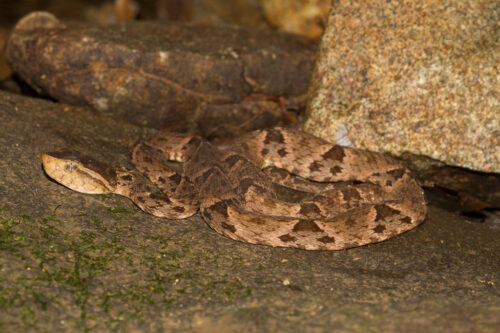
Ferdelance – Bothrops asper
Several species of the genera Bothrops are responsible for more bites and loss of human life than any other group of snakes on the American continent. In Costa Rica, Ferdelance causes approximately 90% of the edges from venomous snakes, and it is responsible for the most fatalities.
With a mass of up to 6 kilograms (13 lb) and a maximum length of 2.5 meters (8.2 ft), the velveteen is among the largest vipers. It is light to dark brown, often with zig-zag yellow lines on each side of the body. Nicknamed «the ultimate viper» for its large size, fangs, and venom output, it has a fearsome reputation and is responsible for most snakebites within its range due to its defensive temperament and proximity to human residence. However, like other venomous snakes, it avoids confrontation with humans whenever possible.
The effect of the venom in humans is severe, and symptoms include pronounced local pain, massive or considerable swelling, nausea, sweating, headache, vomiting, myonecrosis, hemorrhagic blisters, equipoise, arrhythmia, hypotension, tachycardia, intracerebral hemorrhage, and renal damage or inadequacy.
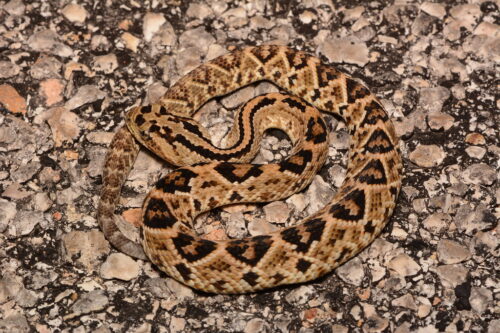
Neotropical Rattlesnake – Crotalus simus
This genus includes approximately three dozen species, popularly known as RattleSnakes. This giant rattlesnake can be found in Central America, from Mexico to Costa Rica. It primarily inhabits semi-arid dry tropical forests and coastal scrub forests, but it can be found on the fringes of rainforests and meadow/grassland clearings in the rainforest.
Bites are similar to rattlesnake bites in the United States. Local symptoms may be severe, with pain, massive swelling, blistering, and necrosis that leads to fasciotomies and, in some cases, amputations. Systemic effects involving hemostatic disturbances are rare, as are kidney failure and neurotoxicity. Only venom from neonates contains crotoxin, a constituent typically found in C. durissus venom that produces neurotoxic symptoms.

Central American Coral Snake – Micrurus nigrocinctus
Coral snakes possess a potent neurotoxic venom that blocks neuromuscular functions and causes progressive paralysis in humans. Initial symptoms appear from two to six hours after a bite, and they are manifested by gradual loss of muscular function, paresis, intermittent paresthesia, proximal lymphadenitis, heavy salivary secretion, spasm of the glottis, paralysis of the tongue, etc. Because of their limited gape and passive timid behavior, a low number of bites occur and represent less than 5% of the annual number of bites reported for venomous snakes of Costa Rica.
(Snakes of Costa Rica book – Alejandro Solórzano, INBIO 2004)

